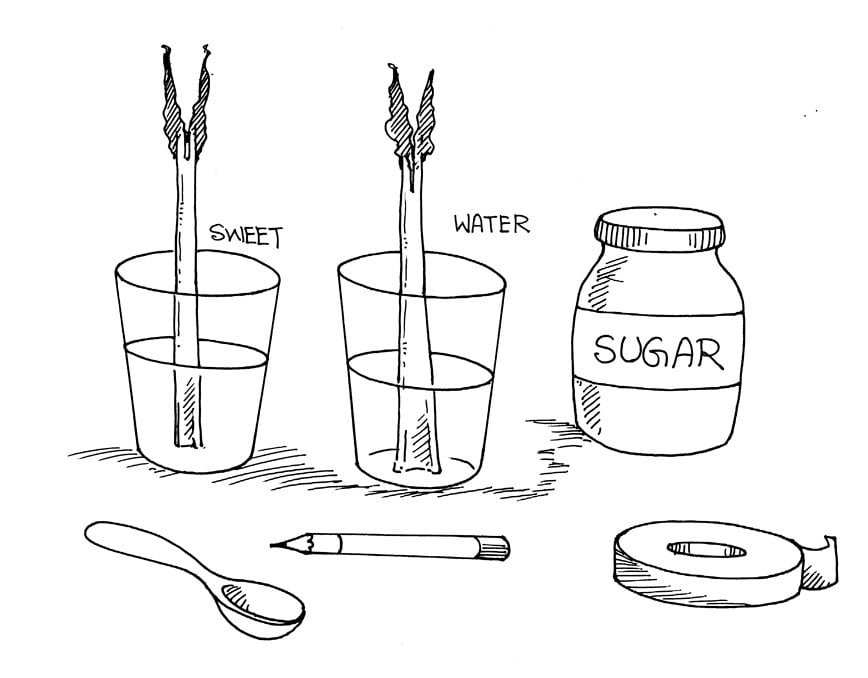
The purpose of this experiment is to demonstrate how the change in turgor pressure causes plant stems to wilt.
Things Required:
1 drinking glass
Wilted stalk of celery
Blue food colouring
Directions:
Ask an adult to cut a slice from the bottom of a wilted celery stalk. Put enough food colouring into a glass half full of water to turn it dark blue.
Allow the celery to stand overnight in the blue water.
This Is What Happens:
The celery leaves become a blue-green colour, and the stalk is firm and crisp.
Science Behind It:
A fresh cut across the bottom ensures that the celery cells are not closed off or dried out. Water enters into the water-conducting tubes called xylem. These tubes run the length of the stalk of the celery. Water leaves the xylem tubes and enters the cells up and down the celery stalk. Plants usually stand erect and return to their original position when gently bent. This happens because each plant cell is normally full of water. The water makes each cell firm and all the cells together cause the plant to be rigid. A plant wilts when it is deprived of water and, like half-filled balloons, the cells collapse causing leaves and stems to droop. The pressure of the water inside the plant cell is called turgor pressure.
Living plants can take in water to produce pressure ranging from 60 to 150 pounds per square inch (4 to 10 atmospheres). The pressure becomes so great during rainy seasons that fruit and vegetables can burst. The pressure is enough for growing plants to move rocks and break through concrete.
